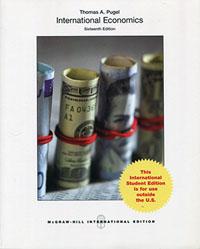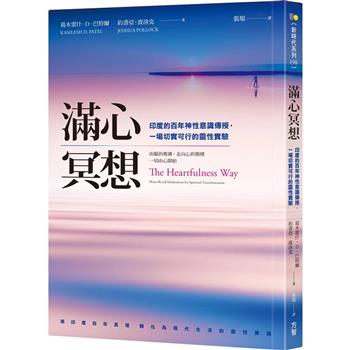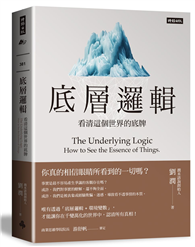Key Features
1.AS/AD Framework Appendix: This provides flexibility for instructors who would like to include this approach in their course.
2.Labor Issues Discussed: The book continues to weave discussion of labor issues into a number of chapters in Parts I and II.
3.Trade and the Environment: It includes discussion of such topics as WTO rulings on environmental policies that affect international trade, transborder pollution, ozone depletion, and global warming.
4.Export Dumping: The material on the dumping of exports includes data on recent anti-dumping actions and the discussion of the use of anti-dumping policy as a protectionist device.
5.NAFTA: The discussion of NAFTA includes a treatment of the important rules of origin. MERCOSUR, the free trade area of South American countries, is also discussed; this is significant because this is the first effective free trade area among developing countries.
6.End-of-Chapter Questions: Each chapter has at least ten questions and problems.
7.Balanced Coverage: The text covers all of the conventional topics in International Economics while grappling with the issues that are being discussed in today’s economic journals and newspapers.
8.Real Situations: Applications taken from real economic situations appear in two-color boxes, so students immediately see the relevance of theory to world economics.
| FindBook |
有 1 項符合
International Economics(16版)的圖書 |
 |
International Economics 作者:Thomas Pugel 出版社:華泰文化 出版日期:2016-01-13 語言:英文 |
| 圖書選購 |
| 型式 | 價格 | 供應商 | 所屬目錄 | $ 1109 |
高等教育 |
|---|
| 圖書館借閱 |
| 國家圖書館 | 全國圖書書目資訊網 | 國立公共資訊圖書館 | 電子書服務平台 | MetaCat 跨館整合查詢 |
| 臺北市立圖書館 | 新北市立圖書館 | 基隆市公共圖書館 | 桃園市立圖書館 | 新竹縣公共圖書館 |
| 苗栗縣立圖書館 | 臺中市立圖書館 | 彰化縣公共圖書館 | 南投縣文化局 | 雲林縣公共圖書館 |
| 嘉義縣圖書館 | 臺南市立圖書館 | 高雄市立圖書館 | 屏東縣公共圖書館 | 宜蘭縣公共圖書館 |
| 花蓮縣文化局 | 臺東縣文化處 |
|
|
圖書介紹 - 資料來源:博客來 評分:
圖書名稱:International Economics(16版)
內容簡介
目錄
Ch 1 International Economics Is Different
Ch 2 The Basic Theory Using Demand and Supply
Ch 3 Why Everybody Trades Comparative Advantage
Ch 4 Trade Factor Availability and Factor Proportions Are Key
Ch 5 Who Gains and Who Loses from Trade?
Ch 6 Scale Economies, Imperfect Competition, and Trade
Ch 7 Growth and Trade
Ch 8 Analysis of a Tariff
Ch 9 Nontariff Barriers to Imports
Ch10 Arguments For and Against Protection
Ch11 Pushing Exports
Ch12 Trade Blocs and Trade Blocks
Ch13 Trade and the Environment
Ch14 Trade Policies for Developing Countries
Ch15 Multinationals and Migration International Factor Movements
Ch16 Payments Among Nations
Ch17 The Foreign Exchange Market
Ch18 Forward Exchange and International Financial Investment
Ch19 What Determines Exchange Rates?
Ch20 Government Policies Toward the Foreign Exchange Market
Ch21 International Lending and Financial Crises
Ch22 How Does the Open Macroeconomy Work?
Ch23 Internal and External Balance with Fixed Exchange Rates
Ch24 Floating Exchange Rates and Internal Balance
Ch25 National and Global Choices: Floating Rates and the Alternatives
Ch 2 The Basic Theory Using Demand and Supply
Ch 3 Why Everybody Trades Comparative Advantage
Ch 4 Trade Factor Availability and Factor Proportions Are Key
Ch 5 Who Gains and Who Loses from Trade?
Ch 6 Scale Economies, Imperfect Competition, and Trade
Ch 7 Growth and Trade
Ch 8 Analysis of a Tariff
Ch 9 Nontariff Barriers to Imports
Ch10 Arguments For and Against Protection
Ch11 Pushing Exports
Ch12 Trade Blocs and Trade Blocks
Ch13 Trade and the Environment
Ch14 Trade Policies for Developing Countries
Ch15 Multinationals and Migration International Factor Movements
Ch16 Payments Among Nations
Ch17 The Foreign Exchange Market
Ch18 Forward Exchange and International Financial Investment
Ch19 What Determines Exchange Rates?
Ch20 Government Policies Toward the Foreign Exchange Market
Ch21 International Lending and Financial Crises
Ch22 How Does the Open Macroeconomy Work?
Ch23 Internal and External Balance with Fixed Exchange Rates
Ch24 Floating Exchange Rates and Internal Balance
Ch25 National and Global Choices: Floating Rates and the Alternatives
|










